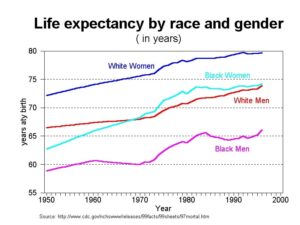Introduction

Want to increase your life expectancy and live better longer? You may want to keep this post. I haven’t exactly found the Fountain of Youth, but I do know what activities lead to a longer life expectancy. In honor of Thanksgiving, and in the spirit of being thankful for life, here are 25 tips that you can incorporate into your daily life to help you live a younger life every day and a longer life.
Tips 1-5
1. Take a walk. Just give yourself a brisk 30-minute walk three times a week. Effect? Reverse your age by about 10 years.
2. Eat more fish. Doing so one to two times a week can reduce your heart attack risk by approximately one-third.
3. Lift weights. Yes, it gets tougher, but I’m not recommending a Schwarzenegger workout. Lifting reverses muscle and bone loss if you do it twice weekly. For those in their 50s or 60s, it can produce strength scores similar to those in their late 30s.
4. Get a pet. This is a pretty easy way to avoid depression and all that comes with it.
5. Hydrate. Your body is almost 70% water. Not soda, water. Learn to embrace clear fluids. When you’re not going clear, coffee and wine also have significant health benefits.

Tips 6-10
6. Equip your home. Everyone should have a functioning smoke alarm, carbon monoxide detector and fire extinguish, and everyone in your home should know where they are and how to use them.
7. Put a helmet on your head. 1,000 people die every year in the U.S. from motorcycle, bicycle, scooter or skydiving injuries related to not wearing protective helmet.
8. Engage in safe sex. Yes, people are still dying prematurely and living compromised lives because of the failure to wear condoms while others protect themselves.
9. Be optimistic. This keeps the negative effects of the body’s physiologic stress response from harming you.
10. Reduce your red meat intake. Even the daily intake of just one serving of red meat equivalent to the size of your fist decreases life expectancy by approximately 13 percent.
Tips 11-15
11. Spend time with friends. Healthy social networks have been shown to add as much to your life expectancy as healthy endeavors such as lowering high blood pressure and reducing high cholesterol levels.
12. Be generous. Studies consistently show that those who help others report better health than those who don’t. It may just be correlation, but being on the right side of this fence makes the world a better place.
13. Sleep. Seven hours a day gets done what your body needs to function optimally.
14. Discover blueberries. There’s been much talk about “superfoods.” Blueberries meet the criteria. Consuming approximately two cups a day has been shown to prevent chronic diseases, reduce depression and improve memory.
15. Enjoy sex and orgasms. There are a million jokes about the benefits of sex, but legitimate benefits include burning calories, reducing stress, inducing sleep and reducing pain.
Tips 16-20
16. Snack on nuts. Healthier nuts include almonds, cashews and pistachios. Eating them five days a week has been shown to add nearly three years to your life expectancy.
17. Get up! Sitting for more than three hours at a time independent of other activities can reduce your life expectancy. Take breaks, stretch and move around.
18. Maintain adequate intake of vitamins. You shouldn’t need supplemental vitamins if your diet is appropriate, buy if it’s not, here are the daily requirements that ensure optimal function. Vit C (1200 mg/day), Vit D (400-600 IU/day), Vit E (400 IU/day), Vit B6 (6 mg/day), calcium (1000-1200 mg/day) and folate (400 mcg/day).
19. Measure your blood pressure. Work to maintain your blood pressure at or below 115/75. This will help you function as much as approximately 25 years younger than someone of a blood pressure at or about 160/90.
20. Brush. Floss. Daily brushing and flossing can improve your functioning by approximately six years.
Tips 21-25
21. Wear your seatbelt. The combination of seatbelt wearing and driving within five MPH of the posted speed limit can improve your life expectancy by approximately three and a half years.
22. Eat fiber. The number to know here is 25. If you get 25 grams of daily fiber in your diet, that improves your function by approximately two and a half years over consuming half that amount. Look for high fiber dietary options.
23. Learn to laugh. Laughter actually does have clinical benefits. It strengthens your immune system by decreasing the stress-induced release of certain hormones. Learn to take or tell a joke!
24. Love fruits and vegetables. The more fruits and vegetables you eat compared to red meat, the better your life expectancy becomes.
25. Consume medical care, information and advice. Being proactive about your health increases both your life expectancy and life functioning compared to someone a dozen years younger who does not. This includes getting recommended screenings and immunizations. Also, have you heard of www.sterlingmedicaladvice.com?
Here’s a bonus tip: Avoid getting hit by that truck.
Follow us!
Feel free to ask your SMA expert consultant any questions you may have on this topic. Take the #72HoursChallenge, and join the community. As a thank you, we’re offering you a complimentary 30-day membership at www.72hourslife.com. Just use the code #NoChaser, and yes, it’s ok if you share!
Order your copy of Dr. Sterling’s books There are 72 Hours in a Day: Using Efficiency to Better Enjoy Every Part of Your Life and The 72 Hours in a Day Workbook: The Journey to The 72 Hours Life in 72 Days at Amazon or at www.jeffreysterlingbooks.com. Receive introductory pricing with orders!
Thanks for liking and following Straight, No Chaser! This public service provides a sample of http://www.SterlingMedicalAdvice.com (SMA) and 844-SMA-TALK. Please share our page with your friends on WordPress! Like us on Facebook @ SterlingMedicalAdvice.com! Follow us on Twitter at @asksterlingmd.
Copyright © 2019 · Sterling Initiatives, LLC · Powered by WordPress




















